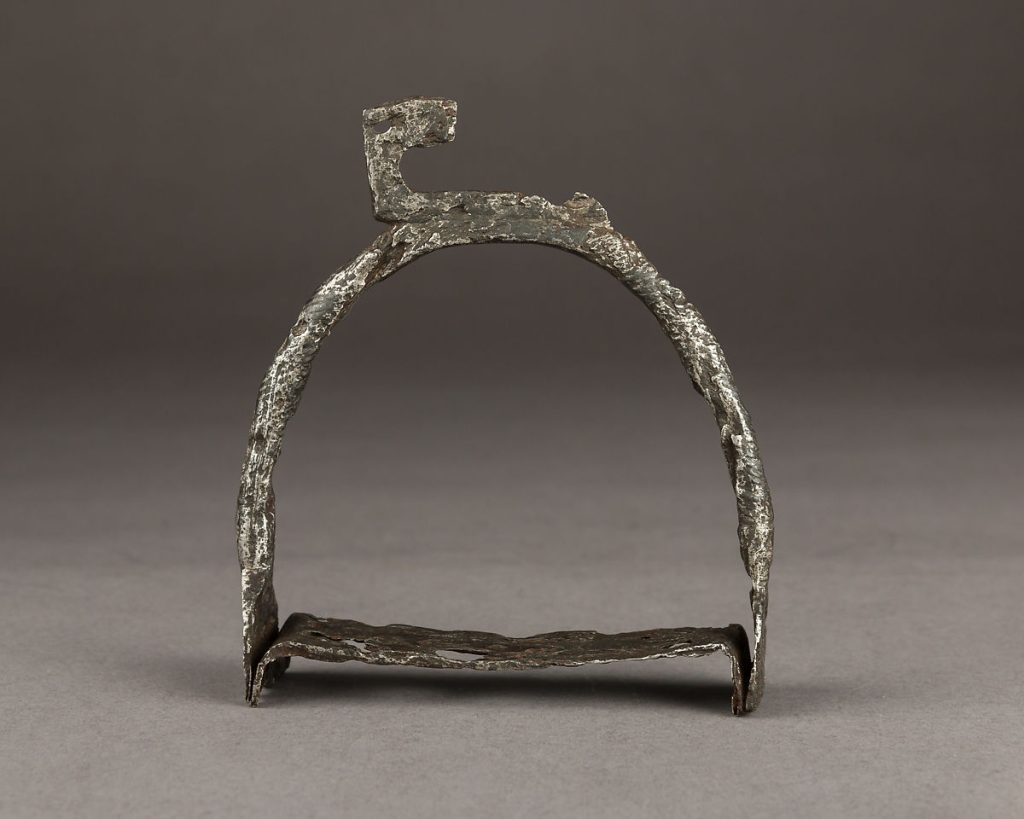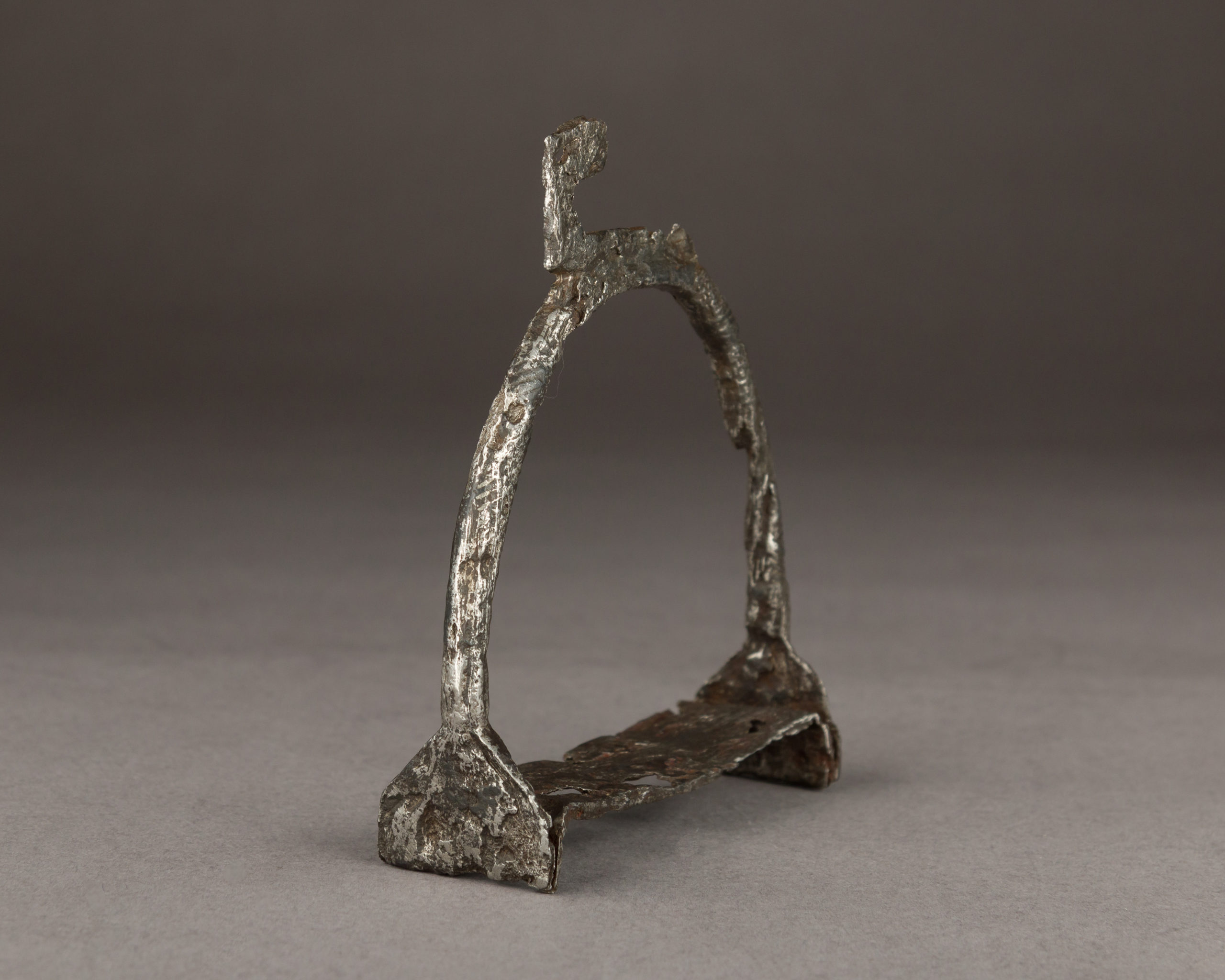Spread
Jessica Hemming
The Diffusion of the Stirrup into Europe
This brings us to the subject of the diffusion of the stirrup into Europe. Despite the claims in some older publications for the role of Goths (in the late 4th century) or Huns (in the mid 5th century), it is now fairly widely accepted that stirrups were brought to Europe by a Turkic-speaking steppe people called the Avars in the 6th century when they established their Central European khaganate (empire) on the Pannonian Plain, which lasted approximately 250 years. The evidence is considerable. Not only do we have the testimony of the Stratēgikon but archaeological excavations throughout the Avar settlement area in what is now mostly Hungary have uncovered numerous iron and steel stirrups.[1] The discovery of early Avar-style stirrups (which have a distinctive “apple” shape found among a range of other Turkic groups) in two Merovingian Frankish graves of the period c.580-c.610 in Germany indicates that these new Central Asian imports were of interest to the adjacent populations, although perhaps only as war booty or elite gifts at first.[2]

It is difficult to trace the spread of stirrups outward from Avar-occupied regions because of the lack of written references. Archaeology only helps up to a point. One problem—previously alluded to—is the fact that stirrups are often found in warrior burials that include grave-goods. Such “furnished” burials (as they are called) only occur among some cultural groups and even then may disappear under new conditions: for example, Scandinavians and Lombards practised this kind of ritual deposition of objects with the body, while a number of Slavic-speaking peoples mostly cremated their dead; the Merovingian Franks furnished their graves abundantly, but this dwindled away as the Carolingian period began. In many areas, the establishment of Christianity gradually led to a decrease in grave-goods such that overall there are few furnished graves in Christian Europe after the 8th century.[3] In other words, a range of variables can skew the record. To this we must add the accident of preservation: iron holds up well in certain conditions, but it also rusts. Where stirrups have been discovered outside of burials, it has tended to be in other situations where they are protected from oxygen, such as in the mud of riverbeds.[4]
All we can say with confidence is that the stirrup was adopted slowly and patchily in Central and Western Europe. The eastern parts of Frankia—where the Franks were nearest the Avar khaganate—show quite limited stirrup-deposition in Merovingian graves dating from the end of the 7th century. One figure will serve as an example: out of approximately 700 excavated graves apparently containing warriors, only 135 contain items indicating that they were specifically cavalrymen, and only 13 contain stirrups.[5] Some other Germanic peoples in the same general region also seem to have adopted stirrups to some extent in the 7th century, judging from grave finds in parts of southern Germany associated with the Alemanni[6] In Scandinavia stirrups begin to appear in archaeological sites in the 8th century and become common from the 9th and 10th centuries. In Britain it has often been thought that the technology came with the Vikings in the 9th century, although this is debated.[7]


Eastern, and especially South-Eastern, Europe is a different matter, for several reasons. As we know from the Stratēgikon, the Byzantine imperial army was using stirrups from c.600. As the 7th century wore on, a new Turkic-speaking Eurasian steppe people—also using stirrups—became a power-player in the region: the Bulgars, who established a state north of the Black Sea on the Pontic Steppe c.630 and then after its collapse a new khanate (kingdom) west of the Black Sea (in the 680s) that would eventually become modern Bulgaria. In other words, South-Eastern Europe had a new influx of stirrup-using equestrian people while the Avars’ European empire was still a going concern. After the Avar state finally collapsed, the Pannonian Plain of the Carpathian Basin was eventually occupied (c.900) by the Magyars, yet another group of horse-riding, stirrup-using steppe people and the last to create an enduring kingdom inside Europe: Hungary.
Questions for Consideration
- Why do different scholars have such wildly varying opinions about when and where the metal stirrup was first invented?
- Given that the Avars who established an empire on the Pannonian Plain brought a key equestrian technology to Europe, should they merit more attention in medieval history courses and textbooks than they currently tend to receive?
- Did the stirrup really contribute directly to the patterns of power in Europe from roughly the eighth century to the eleventh, or would the same groups (Franks, Vikings, Normans, Germans) have been dominant even without this technology?
Media Attributions
- Avars hungary 7-8th cAD Iron Stirrups © Bjoertvedt is licensed under a CC BY-SA (Attribution ShareAlike) license
- Viking Stirrup Front © Gift of Stephen V. Grancsay, 1942 is licensed under a Public Domain license
- Florin Curta, “The Earliest Avar-Age Stirrups, or the ‘Stirrup Controversy’ Revisited,” in The Other Europe in the Middle Ages: Avars, Bulgars, Khazars, and Cumans, edited by Florin Curta and Roman Kovalev (Leiden: Brill, 2008), 304-07; Walter Pohl, The Avars: A Steppe Empire in Central Europe, 567-822 (Ithaca, NY: Cornell University Press, 2018), 100-04. ↵
- Curta, “The Earliest Avar-Age Stirrups,” 307 (illustration on 304). ↵
- Edward James, “Burial and Status in the Early Medieval West,” Transactions of the Royal Historical Society 39 (1989), 24. ↵
- Wilfred A. Seaby and Paul Woodfield, “Viking Stirrups from England and their Background,” Medieval Archaeology 24 (1980), 102. ↵
- Philippe Contamine, War in the Middle Ages, trans. Michael Jones (Oxford: Blackwell, 1984), 184. ↵
- Mark Redknap, “Ring Rattle on Swift Steeds: Equestrian Equipment from Early Medieval Wales,” in Early Medieval Art and Archaeology in the Northern World: Studies in Honour of James Graham-Campbell, edited by Andrew Reynolds and Leslie E. Webster (Leiden: Brill, 2013), 177-210 (photograph on p. 194). ↵
- For up-to-date and highly accessible research on the medieval military use of horses in Britain see the “Warhorse: The Archaeology of a Military Revolution?” project at the University of Exeter, England: https://medievalwarhorse.exeter.ac.uk/ ↵
a Germanic-speaking people, probably originally from northern Germany, who settled temporarily on the Pannonian Plain (modern Hungary and Slovakia) and then moved south to Italy in the 6th century CE, where they established a kingdom, 568-774
a confederation of Germanic-speaking tribes in the area of southern Germany just north of the Alps, including Lake Constance in modern Austria. They were known to the Romans, nominally conquered by the Franks, and eventually gave their name to several languages as the generic term for “Germans” and “Germany” (e.g. French les allemands and L’Allemagne)

